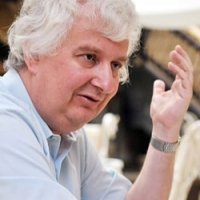The Rise of Kim Jong Il - Evidence from East German Archives







Introduction
Newly obtained East German documents reveal that the late North Korean leader Kim Jong Il had been groomed from as early as 1974 to take over the helm of the North Korean state. While Kim Jong Il would not become Supreme Leader until July 1994, the succession process began so early out of fear that “something grave might happen to Kim Il Sung.” Kim Jong Il’s rise to power thus extended over two-decades, dwarfing the two to three years during which the “great successor” Kim Jong-Eun, Kim Jong Il’s third and youngest son, has been vetted and prepared.
East German documents also reveal details of Kim Jong Il’s succession, including the early distribution of photographs of the successor, the institutionalization of the Kim-family cult, and the use of mass campaigns, including the Three Revolutions Movement, to build a base of support among cadres in the ruling Korean Workers’ Party and among the masses.
DOCUMENT No. 1
[Click to view the document in the Wilson Center's Digital Archive]
GDR Ambassador Pyongyang to Ministry for Foreign Affairs, Berlin
12 November 1974
Source: Political Archive of the Foreign Office, Ministry of Foreign Affairs (PA AA, MfAA), C 6862. Obtained and translated for NKIDP by Bernd Schaefer.
Radio Seoul reported about four weeks ago that a high-ranking DPRK security officer fled from Kaesong to South Korea. In addition to slanderous remarks against the DPRK, he made statements about the family of Comrade Kim Il Sung largely resembling our own observations we made among our inner circles of [North Korean] friends. According to them, party meetings were held across the DPRK to swear loyalty to Kim Jong Il, the son of Kim Il Sung, in case something grave might happen to Kim Il Sung. There are the first large photos of Kim Il Sung’s eldest son showing up in offices, featuring slogans of statements he made on reunification or socialist construction.
Together with recently increased attention towards the son comes a higher profile of his mother, Kim Il Sung’s first wife. … The entire issue is highly non-transparent and delicate. The Korean comrades do not comment on it; our observations must be made over the long term and with a lot of sensitivity. Museum visits once in a while can provide informative clues.
DOCUMENT No. 2 [Click to view the document in the Wilson Center's Digital Archive]
GDR Ambassador Pyongyang to Ministry for Foreign Affairs, Berlin
14 April 1975
Source: Political Archive of the Foreign Office, Ministry of Foreign Affairs (PA AA, MfAA), C 6862. Obtained and translated for NKIDP by Bernd Schaefer.
In Pyongyang a large exhibit was opened on “The Groups of the Three Revolutions”. It provides a comprehensive overview of activities by these groups over the last year. … A peculiarity is worth mentioning: For the first time, the chronology of Kim Il Sung’s family strongly highlights his first wife and his oldest son. Some large paintings show Kim Il Sung with his son. Other widely enlarged photos show his son instructing propagandists and film producers. He already displays the pose usually reserved for Kim Il Sung in his talks with DPRK citizens. This visual observation confirms in fact our assumption we have made earlier: Kim Il Sung’s eldest son is systematically groomed to become his successor.
DOCUMENT No. 3
[Click to view the document in the Wilson Center's Digital Archive]
GDR Ambassador Pyongyang to Ministry for Foreign Affairs, Berlin
12 December 1975
Source: Political Archive of the Foreign Office, Ministry of Foreign Affairs (PA AA, MfAA), C 6862. Obtained and translated for NKIDP by Bernd Schaefer.
Currently the entire DPRK is engaged in the movement “Conquest of the Red Banner of the 3 Revolutions”. It started about two months ago in the ore mines. Eventually it included, after heightened, efforts the entire industry, agriculture, the education system, and the state apparatus. … The “Party Center” (Kim Il Sung’s son) is said to have initiated this.
DOCUMENT No. 4
[Click to view the document in the Wilson Center's Digital Archive]
GDR Ambassador Pyongyang to Ministry for Foreign Affairs, Berlin
4 July 1977
Source: Political Archive of the Foreign Office, Ministry of Foreign Affairs (PA AA, MfAA), C 6862. Obtained and translated for NKIDP by Bernd Schaefer.
Currently we have the impression that there is less frequent mentioning of the “party center” than recently. At locations accessible to foreigners there is no more display of Kim Jong Il slogans. The number of portraits also receded.


The North Korea International Documentation Project serves as an informational clearinghouse on North Korea for the scholarly and policymaking communities, disseminating documents on the DPRK from its former communist allies that provide valuable insight into the actions and nature of the North Korean state. Read more


The Cold War International History Project supports the full and prompt release of historical materials by governments on all sides of the Cold War. Read more


The Center for Korean History and Public Policy was established in 2015 with the generous support of the Hyundai Motor Company and the Korea Foundation to provide a coherent, long-term platform for improving historical understanding of Korea and informing the public policy debate on the Korean peninsula in the United States and beyond. Read more
